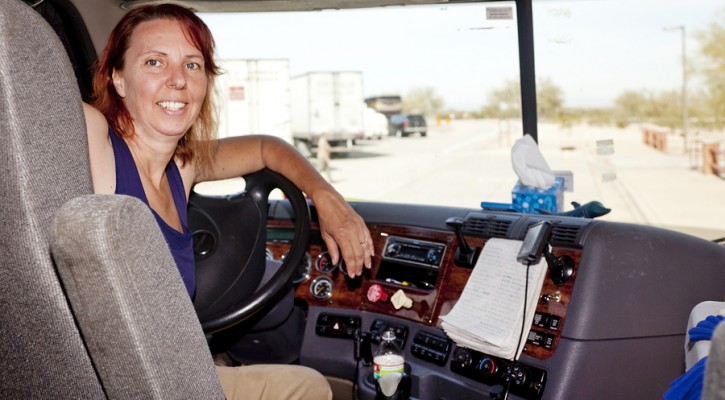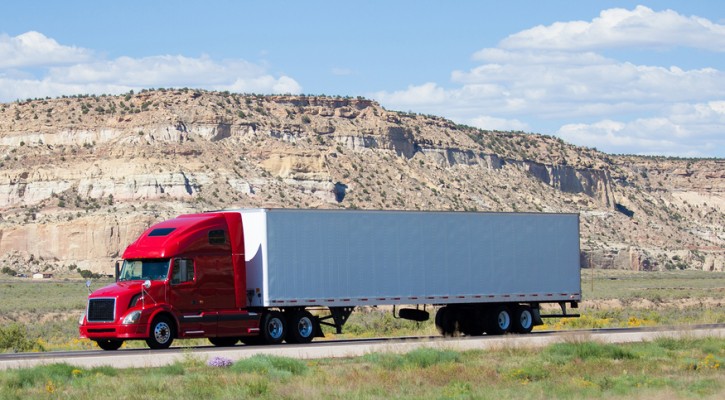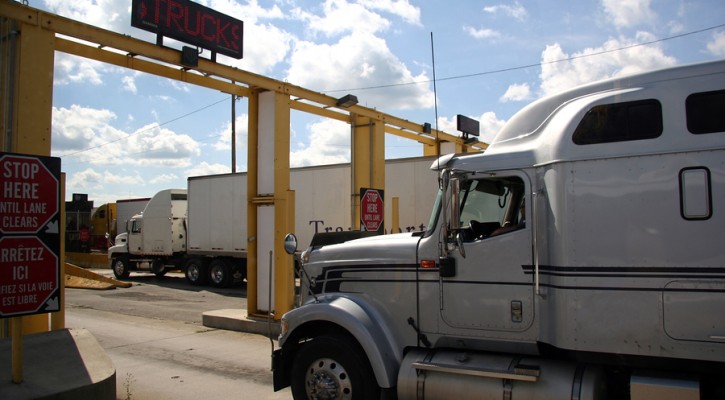
30 Years Without an Accident: Driving Tips from a Pro
April 10, 2014
Ron Hawkins, Jr. has been a truck driver for thirty years. In all that time, he has never been involved in an accident. Considering that most of us don’t drive for a living and still get in the occasional fender bender, that record is pretty impressive. This trucker has seen it all: people texting while driving, shaving while driving, and even reading the newspaper while driving. He has shared the road with inexperienced and distracted drivers, as well as a few courteous drivers. In the Toledo Blade, Hawkins shares his experiences, as well as a lot of helpful tips to make us all safer drivers. See the full story here:

Gas-Saving Game-Changing Tractor-Trailer
April 10, 2014
At 9.9 mpg, the proud engineers of this tractor-trailer have accomplished a 54% increase in fuel efficiency. Now, that’s a real game changer. If put into use, this truck could save owners tons of money, reduce shipping costs and make the prices of common consumer goods cheaper for everyone. See the full story here:
http://www.wired.com/2013/04/super-truck/

A Woman’s Perspective on Tractor-Trailer Design
April 10, 2014
One woman is changing the way truck manufacturers design new vehicles. A female perspective is an important (and previously non-existent) part of the design process, which is a shame considering how much women could contribute to the severe driver shortage.
This article looks at how something as simple as an adjustable seat can attract new drivers to the industry as well as make the roads safer for us all.
ATRI Asks for Driver Input
April 9, 2014
The American Transportation Research Institute is surveying truckers on the impacts of Hours of Service (HOS) rules and about detention time for two separate studies.
The first study is a follow up to a report released in November, which stated that more than 65% of drivers reported loss of pay due to HOS regulations. The second study “seeks to evaluate the impact that shippers and receivers may have on truck drivers’ safety, productivity and hours-of-service compliance”.
Hopefully these surveys and studies will result in smarter legislation in the trucking industry.

A Hero
April 9, 2014
There was a close call last week when a truck and a school bus nearly collided. However, thanks to the quick thinking of the trucker, the tragedy was avoided. See the full story here:

Trucking Terminology
April 8, 2014
Trucking terminology is the language of the industry. It’s important to learn the lingo now so you will have head start in the game. Here is a list of essential trucking vocabulary words to get you started:

Weigh Stations: An App For That
April 8, 2014
Drivewyze, a subsidiary of roadside inspection equipment manufacturer Intelligent Imaging, has created an app that alerts truckers when there is an upcoming weigh station, so they can prepare to slow down and be ready for an inspection. The app also allows certain users to bypass inspections in participating states.
While the weigh station alert is free, users must pay for the subscription that allows them to bypass inspections. Subscribers’ data is stored on company servers, and when law enforcement must determine whether or not to pull in a truck, the system gives them the truck driver’s identity and driving record. This way, officers can prioritize and allow safe drivers to bypass inspections, rather than pulling over 100% of the trucks that come through.
Know Your Weight
April 8, 2014
One of the most difficult jobs for a trucker is keeping the tractor-trailer within the legal weight requirements. There is a standard maximum weight for commercial vehicles on the Interstate Highway System, and it is as follows:
Single Axle: 20,000 pounds
Tandem Axle: 34,000 pounds
Gross Vehicle Weight: 80,000 pounds
This simple standard weight law works well when shippers have a scale, or there is a scale nearby. However, when the shipper doesn’t have a scale and loads the trailer overweight, it is the trucker who gets fined. That’s just the way it is… at least for now. So, what can truckers do to ensure they are always within the weight requirements? Experienced drivers have a few tricks up their sleeve that allow them to “eyeball” a shipment and know the approximate weight, however beginners would do well to learn a few rules of thumb before hitting the road:
#1 Never Take Chances
While safety should always be your first priority, you also don’t want to leave your driving record up to chance, or your wallet, for that matter. For instance, a cop may pull you over on the way to a scale, or it may not be possible to find a scale before crossing an official weigh station. If this happens and you’re overweight, you can bet you will be the one receiving a ticket. Currently, overweight fines are about $500. So, do your homework and know how much your truck weighs (both fueled up and empty), what it looks like with the correct weight, and what it looks like when it’s close to overweight. This article at Life As A Trucker.com has some great advice for new drivers learning how to estimate their weight. You can also take this simple advice from an experienced trucker at www.truckingtruth.com:
“Some loads don’t require weighing if its under 40000 and you know how to read your air suspension gauge. Rule of thumb: under 20000 8th hole, 20000 to 30000 7th hole 30000 to 40000 6th hole and 40000 5th hole; works every time. Except when they screw the loading. That’s why its important to know how they load your trailer and where its loaded too. Being with a company awhile you will learn your freight, shippers and how its loaded.”
#2 Know your shipper
If it’s a new shipper, be sure to look at what they are loading, how much they are loading, and how they are loading it. If they ask how much weight you can haul, give yourself some wiggle room. For instance, if you weigh 32,000 pounds empty, then don’t tell them 48,000 pounds. That gives you absolutely no wiggle room, and it’s very unlikely that the shipper will know exactly how to position its products to ensure the weight on your axles is correct. Once you get to know your shippers better, you will remember who has scales, who doesn’t, who loads correctly and who to keep an eye on.
#3 Communicate with your dispatcher
Let the dispatcher know if the shipper has no scale. They may need to be informed of route changes, and they also might be able to locate a nearby scale for you.
#4 Know how to find nearby scales
There are quite a few strategies for finding nearby scales, but first you need to know about the two main types of scales: CAT scales and independent scales. CAT scales are always accurate and can give you a legal guarantee that your shipment is under the correct weight. Independent scales do not come with a guarantee, but they can give you documentation that you did indeed weigh the truck. Independent scales can be found at places such as gravel plants, landfills, recycling centers, feed mills, and household movers. To find a nearby scale, you can ask the shipper, your dispatcher, or use the following tools:
Or, if you have a smartphone, then browse the truck driving apps for the best scale finder for your phone. Like all things, there’s an app for that.

Trucker Physical
April 7, 2014
Know the physical requirements of being a trucker before you see the doctor. This article covers all the basics so you can get fit and get your physical without too much stress. See the full story here:
http://www.nationalowneroperatorjobs.com/trucking-lifestyle.html

Cheaters
April 7, 2014
After launching an investigation last September, 21 people drivers have been arrested for cheating their way through their CDL exams at a testing facility in New York. The initial investigation uncovered 8 ringleaders, 8 test takers and 3 security guards who were involved in the scandal.
These 19 people led investigators to 21 more people who used their services to cheat on their CDL exams. Before being arrested, these cheaters hauled everything from hazmat to children on school buses.
